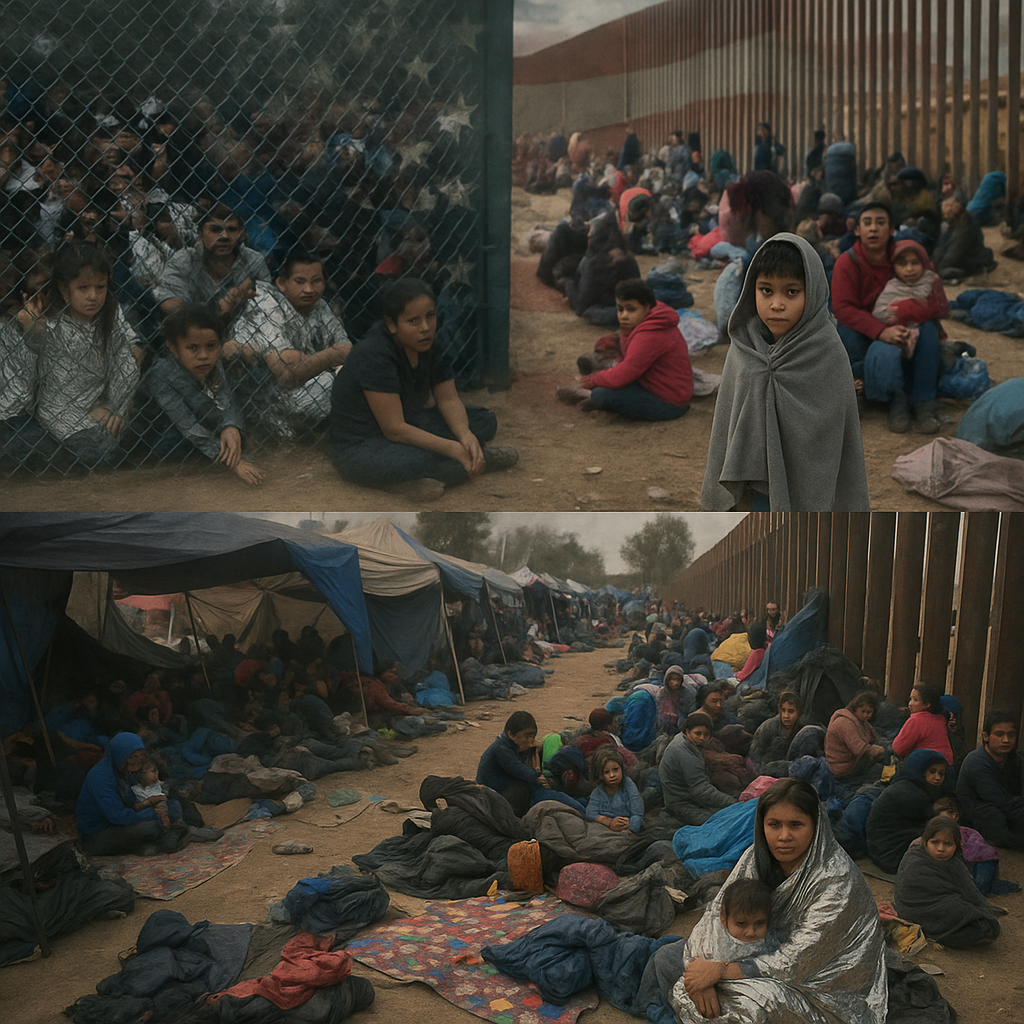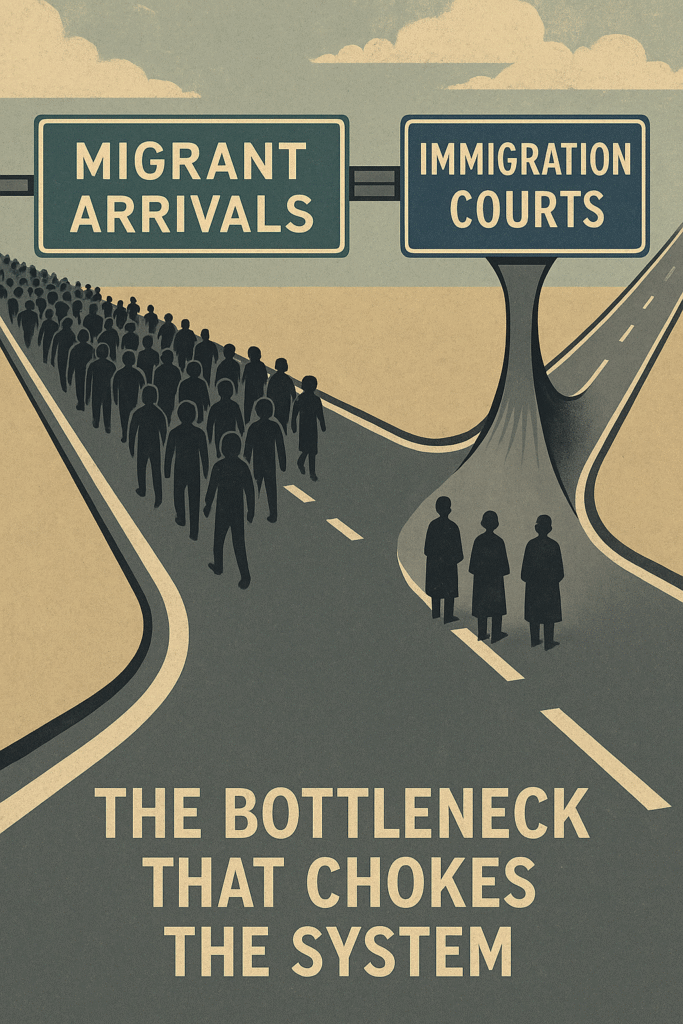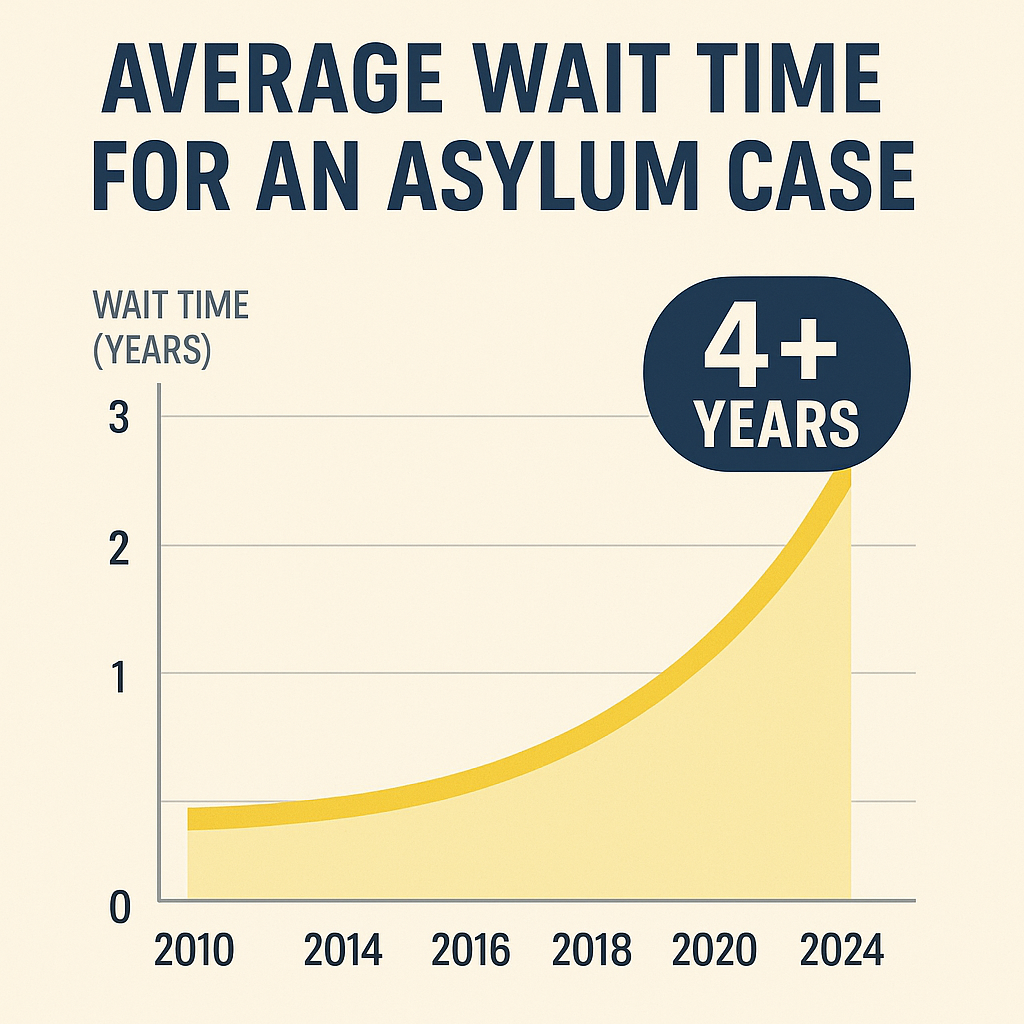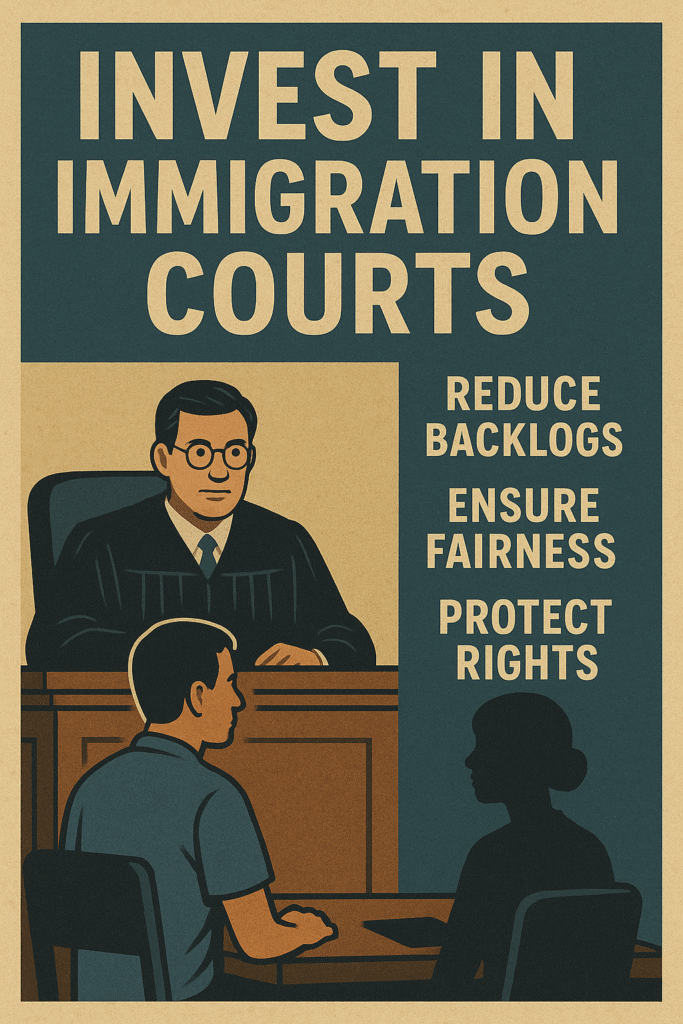By: Michael Moats
Why the GOP is Failing at the Border: How Investing in Immigration Courts Could Solve America’s Crisis
For years, the Republican Party (GOP) has positioned itself as the party of strong borders and strict immigration enforcement. From border walls to aggressive enforcement policies, the GOP’s strategy has largely focused on deterrence—shutting down illegal crossings and emphasizing border security. Yet, the situation at America’s southern border continues to deteriorate. Overcrowded detention centers, backlogged asylum claims, and a humanitarian crisis affecting migrants and border communities alike have raised questions about the GOP’s effectiveness in handling the issue.
The truth is, the GOP’s approach has often ignored a critical factor: the role of immigration courts. While billions have been poured into border security measures—such as surveillance systems, physical barriers, and increased Border Patrol agents—little has been invested in the immigration courts that process asylum and deportation cases. This neglect has led to a logjam of cases, with some migrants waiting years for a decision. By addressing this systemic issue, the government could resolve much of the border crisis—not with more walls, but with faster, fairer adjudication.
This article will explore why the GOP is failing at the border and how investments in the immigration courts could transform the system, offering a bipartisan solution to a long-standing crisis.
The GOP’s Border Strategy: Focus on Enforcement, Not Solutions
Since the early 2000s, the GOP has advocated for tough-on-immigration policies. These include:
- Building border walls (e.g., the Trump administration’s focus on physical barriers)
- Deploying more Border Patrol agents and military personnel to the border
- Instituting harsh asylum restrictions (e.g., Title 42 expulsions during the pandemic)
- Opposing measures that would legalize or provide pathways for undocumented immigrants
While these policies may appeal to a certain voter base, they have failed to address the root causes of migration and the practical challenges of an overwhelmed immigration system.

Data from U.S. Customs and Border Protection (CBP) shows that while enforcement efforts have ramped up, the number of migrant encounters at the southern border continues to hit record highs, suggesting that deterrence alone is ineffective. Smugglers and desperate migrants often find ways around border barriers, while the root issues—violence, economic instability, and climate change—continue to drive migration from Central America and beyond.
The Real Bottleneck: America’s Underfunded Immigration Courts
The U.S. immigration court system is a critical, yet often overlooked, component of border management. As of early 2024, there were over 2.1 million pending cases in the immigration court backlog—a record high. The average wait time for an asylum case to be heard is more than four years. This means that even if a migrant is apprehended at the border, they may remain in legal limbo for years, often without work authorization, creating hardships for families and local economies alike.
Why is the backlog so severe? The simple answer: chronic underfunding.
While CBP and ICE budgets have ballooned over the past two decades, the budget for immigration courts—managed by the Executive Office for Immigration Review (EOIR)—has not kept pace. There are fewer than 700 immigration judges nationwide, far too few to handle the caseload efficiently. Each judge is responsible for thousands of cases, leading to delays, errors, and inconsistent rulings.

Investing in Immigration Courts: A Smarter Solution
Imagine if a fraction of the billions spent on border security were redirected toward hiring more immigration judges, legal clerks, and support staff. Here’s what targeted investments could achieve:
1. Reduce Backlogs
By expanding the number of immigration judges, the system could process cases more swiftly. This would shorten wait times for asylum seekers and ensure that people with valid claims are granted protection quickly, while those without legal grounds are deported in a timely manner.
2. Improve Fairness and Consistency
Overworked judges often make snap decisions under intense pressure, leading to inconsistent outcomes. With better staffing, judges could take the time needed to evaluate cases thoroughly, improving the quality and fairness of rulings.
3. Lower Border Pressure
Faster case resolutions would deter migrants without valid asylum claims from making the journey, knowing they can’t expect to “wait out the system” indefinitely. Conversely, genuine asylum seekers would find relief faster, reducing humanitarian strain at the border.
4. Save Money Long-Term
Detaining migrants for years is expensive. According to DHS estimates, it costs $150 to $300 per day to detain a single person. Processing cases efficiently would lower these costs and reduce the need for long-term detention centers.

Why the GOP Resists Court Investments
Despite the logic, many GOP lawmakers resist calls to expand immigration courts, often framing it as “soft” on illegal immigration. Some argue that streamlining asylum cases could encourage more migrants to come. Others see investments in the courts as an indirect form of amnesty. But these arguments ignore a fundamental truth: the current system is broken, and refusing to fix the courts only worsens the crisis.
Ironically, a faster, more efficient court system would actually align with the GOP’s stated goals—ensuring that those without valid claims are removed swiftly. Yet, political posturing often takes precedence over pragmatic solutions.
The Bipartisan Case for Court Reform
Investing in immigration courts is not a left-wing or right-wing solution—it’s a practical one. Lawmakers from both parties have proposed measures to increase funding for the courts, recognizing that an overwhelmed system benefits no one. A bipartisan 2021 proposal, for example, sought to hire an additional 300 immigration judges to reduce the backlog—a small but critical step.
Moreover, business groups, human rights advocates, and border communities alike have called for court reform. Farmers and business owners want legal clarity for workers, while communities near the border want to reduce the chaos and strain that come from overcrowded facilities and prolonged uncertainty.

The Way Forward: Reframing the Border Debate
The U.S. needs to shift the debate from border walls and razor wire to the legal mechanisms that process immigration claims. A robust immigration court system is the linchpin of effective border management. It ensures that:
- Those who qualify for asylum are protected
- Those who do not are removed quickly and fairly
- Border resources are not overwhelmed by indefinite detentions
Ultimately, this approach would restore credibility to the immigration system, reduce chaos at the border, and demonstrate that the U.S. can balance security with humanitarian principles.
The GOP may want a “Forever Crisis” and Democrats can exploit that
The GOP’s current approach to the border crisis—focused on physical barriers and enforcement—has not delivered results. Record numbers of crossings, backlogged courts, and humanitarian disasters continue to plague the system.
It’s time for a new strategy: one that invests in the very infrastructure designed to process immigration claims—the courts. By hiring more judges, expanding resources, and modernizing court systems, the U.S. can resolve much of the border crisis without sacrificing security or compassion.
Until policymakers are willing to make this shift, the border will remain a political flashpoint rather than a problem solved. The choice is clear: we can build walls or we can build solutions. Let’s hope Congress chooses the latter.
Sources for the Article
- U.S. Department of Justice, Executive Office for Immigration Review (EOIR) – Caseload Statistics
https://www.justice.gov/eoir/workload-and-adjudication-statistics
(Regular updates on immigration court backlogs, judge staffing levels, and caseload trends.) - Transactional Records Access Clearinghouse (TRAC) – Immigration Court Backlog Tool
https://trac.syr.edu/phptools/immigration/court_backlog/
(Comprehensive data on backlog growth, wait times, and state-by-state court statistics.) - Congressional Research Service – Border Security and Immigration Enforcement: FY2024 Appropriations
https://crsreports.congress.gov/product/pdf/R/R47149
(Breakdown of U.S. spending on border security vs. immigration courts.) - American Immigration Council – The Cost of Immigration Enforcement and Border Security
https://www.americanimmigrationcouncil.org/research/the-cost-of-immigration-enforcement-and-border-security
(Analysis of budget trends and spending priorities.) - Migration Policy Institute – Rethinking U.S. Immigration Courts: Fixing the System
https://www.migrationpolicy.org/research/rethinking-immigration-courts
(Detailed policy recommendations for improving the immigration court system.) - CBP Monthly Statistics – Southwest Border Encounters
https://www.cbp.gov/newsroom/stats/southwest-land-border-encounters
(Official data on border crossings and apprehensions.) - Bipartisan Policy Center – Immigration Courts: A System in Crisis
https://bipartisanpolicy.org/report/immigration-courts-a-system-in-crisis/
(Nonpartisan analysis of court funding needs and backlog solutions.) - Pew Research Center – Key Facts About U.S. Immigration Policies and Proposals
https://www.pewresearch.org/short-reads/2023/09/20/key-facts-about-us-immigration-policies/
(Contextual data on immigration trends and public opinion.)


